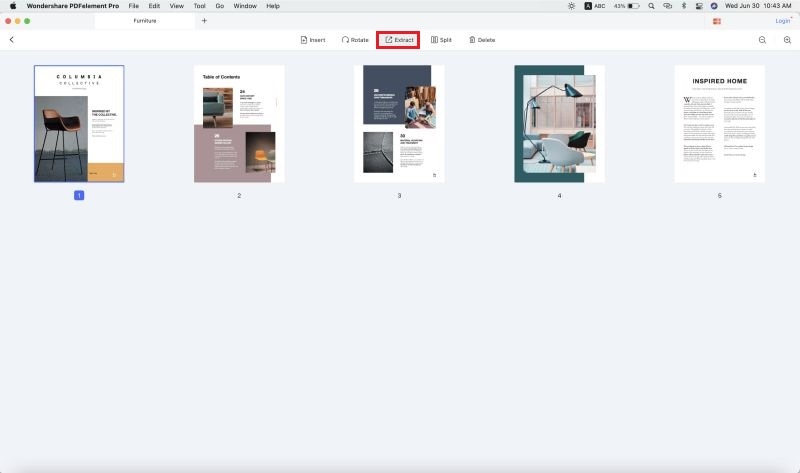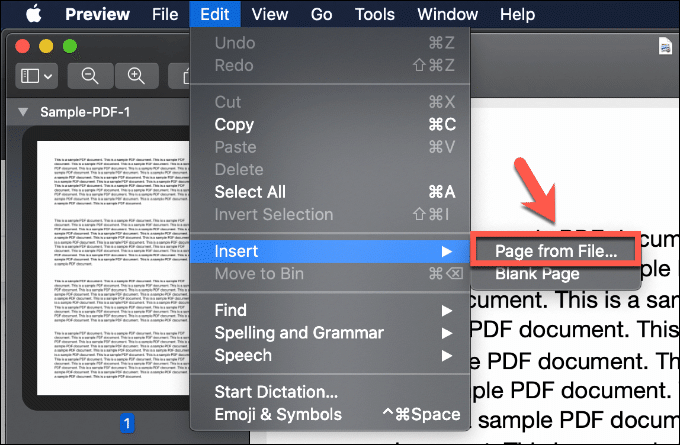Mac Os X Extract Pages From Pdf
In the Preview app on your Mac, open the PDF you want to change. Do any of the following: Add a page to a PDF: Select the page you want to appear before the new page, choose Edit Insert, then choose Page from File or Blank Page. The new page is inserted after the current page. Delete a page from a PDF: Choose View Thumbnails or View Contact Sheet, select the page or pages to delete. Gs -o removed-page-1-from-input.pdf -sDEVICE=pdfwrite -dFirstPage=2 /path/to/input.pdf However, pdftk is the better tool for that job (and was already recommended to you). Also, this Ghostscript commandline could change some of the properties in your input.pdf because it essentially re-distills it.
Tabula
Current Version:1.2.1
Other Versions:pre-releases & archives

Need help? Open an issue on Github.
Donate: Help support this project by backing us on OpenCollective.
We'd love to hear from you! Say hi on Twitter at @TabulaPDF

Latest Version: Tabula 1.2.1
June 4, 2018
Tabula 1.2.1 fixes several bugs in the user interface and processing backend. (You can read about all the changes in the release notes.)
Download Tabula below, or on the release notes page.
Special thanks to our OpenCollective backers for supporting our work on Tabula; if you find Tabula useful in your work, please consider a one-time or monthly donation.
How Can Tabula Help Me?
If you’ve ever tried to do anything with data provided to you in PDFs, you know how painful it is — there's no easy way to copy-and-paste rows of data out of PDF files. Tabula allows you to extract that data into a CSV or Microsoft Excel spreadsheet using a simple, easy-to-use interface. Tabula works on Mac, Windows and Linux.

Who Uses Tabula?
Tabula is used to power investigative reporting at news organizations of all sizes, including ProPublica, The Times of London, Foreign Policy, La Nación (Argentina), The New York Times and the St. Paul (MN) Pioneer Press.
Grassroots organizations like SchoolCuts.org rely on Tabula to turn clunky documents into human-friendly public resources.
And researchers of all kinds use Tabula to turn PDF reports into Excel spreadsheets, CSVs, and JSON files for use in analysis and database applications.
Download & Install Tabula
Windows & Linux users will need a copy of Java installed. You can download Java here. (Java is included in the Mac version.)
- Download the version of Tabula for your operating system:
- Windows:tabula-win.zip
- Mac OS X:tabula-mac.zip
- Linux/Other:tabula-jar.zip, view README.txt inside for instructions
- Extract the zip file. (Instructions: Windows, Mac)
- Go into the folder you just extracted. Run the 'Tabula' program inside.
- A web browser will open. If it doesn't, open your web browser, and go to http://localhost:8080. There's Tabula!
How to Use Tabula
- Upload a PDF file containing a data table.
- Browse to the page you want, then select the table by clicking and dragging to draw a box around the table.
- Click 'Preview & Export Extracted Data'. Tabula will try to extract the data and display a preview. Inspect the data to make sure it looks correct. If data is missing, you can go back to adjust your selection.
- Click the 'Export' button.
- Now you can work with your data as text file or a spreadsheet rather than a PDF! (You can open the downloaded file in Microsoft Excel or the free LibreOffice Calc)
Note: Tabula only works on text-based PDFs, not scanned documents.
Authors and Contributors
Tabula was created by Manuel Aristarán, Mike Tigas and Jeremy B. Merrill with the support of ProPublica, La Nación DATA, Knight-Mozilla OpenNews, The New York Times. Tabula was designed by Jason Das.
Tabula was created by journalists for journalists and anyone else working with data locked away in PDFs. Tabula will always be free and open source.

How To Extract Pages From Pdf
Want to contribute? Fork it on GitHub and check out the to-do list for ideas. You can also support our continued work on Tabula with a one-time or monthly donation.
Edit Pdf Os X
Tabula is made possible in part through the generosity of our users and through grants from the Knight Foundation and the Shuttleworth Foundation.